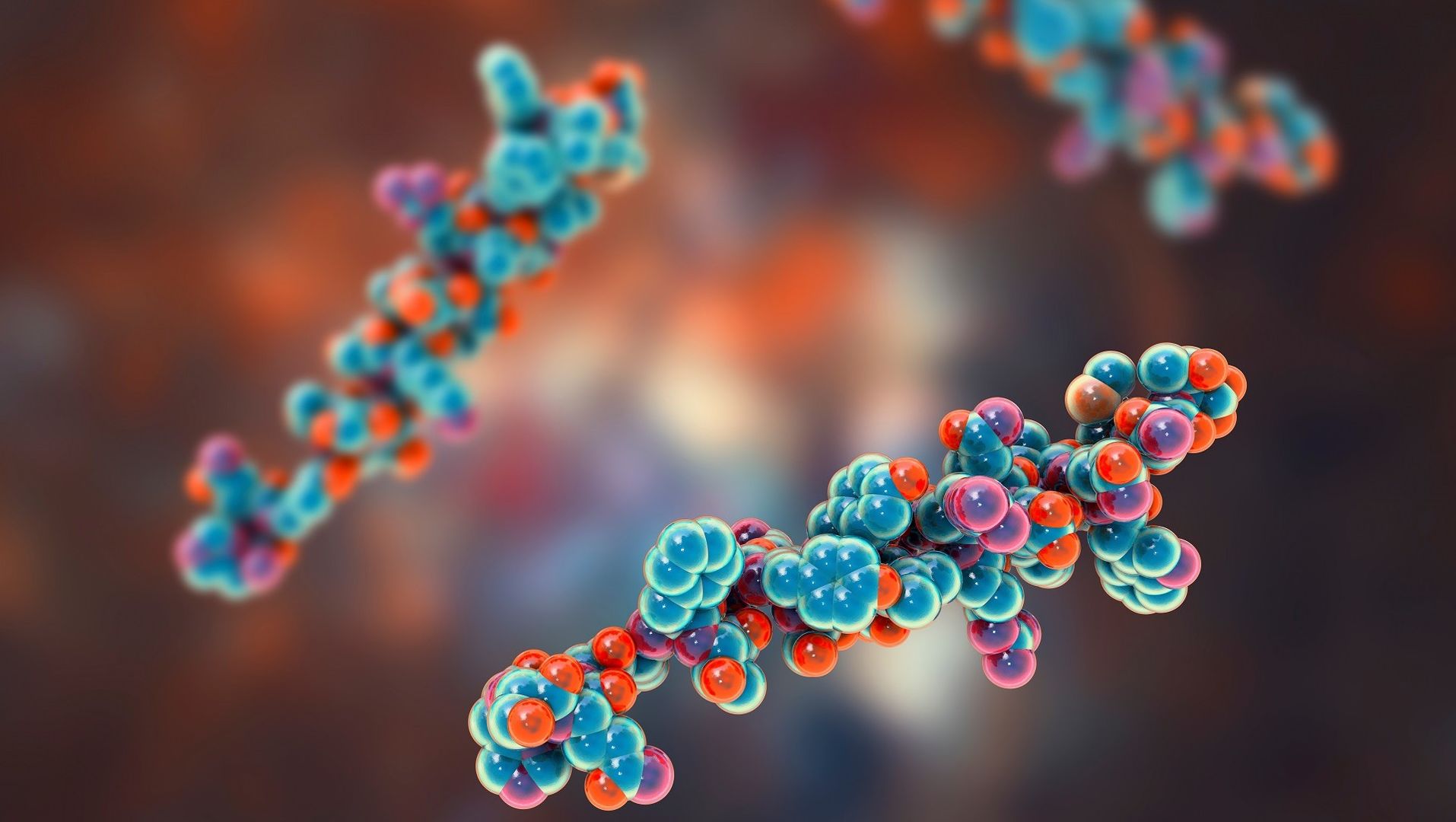As a leading peptide analysis company, Creative Proteomics is dedicated to providing cutting-edge peptide analysis services to industries and research institutions worldwide. With a team of highly skilled scientists and state-of-the-art facilities, we specialize in the comprehensive analysis of peptides, offering a wide range of services to characterize and assess the properties, interactions, and functionality of peptides. Our commitment to excellence, accuracy, and timely delivery ensures that our clients receive the highest quality results and personalized support to advance their research and development efforts.
What is Peptide-Lipid Interaction Analysis?
Interactions between peptides and lipids are pivotal for the facilitation of numerous membrane-mediated cellular, encompassing antimicrobial peptide action, interactions involving hormone receptors, bioavailability of drugs across the blood-brain barrier, and viral fusion processes. Additionally, a major objective within contemporary biotechnology resides in the acquisition of novel efficacious pharmaceuticals, whose biological impacts hinge upon the binding of peptides to lipid bilayers. Various matters necessitate attention, encompassing secondary structure, orientation, oligomerization, and intramembrane localization. Simultaneously, the structural repercussions of peptides on lipid bilayers hold significance for interactions and necessitate explication. The structural characterization of peptides that exhibit activity within membranes poses a substantial experimental quandary.
Peptide-Lipid Interaction Detection Services by Creative Proteomics
- Peptide and Lipid Preparation
We provide personalized peptide synthesis and lipid preparation services to ensure you acquire superior samples for your experimental endeavors.
- Binding Assays
We offer a range of binding assays to examine interactions between peptides and lipids, encompassing surface plasmon resonance (SPR), isothermal titration calorimetry (ITC), fluorescence polarization (FP), and fluorescence resonance energy transfer (FRET). These assays facilitate real-time and highly sensitive detection of binding affinity, kinetics, and thermodynamics.
- Structural Characterization
Our service includes thorough structural characterization utilizing techniques such as nuclear magnetic resonance (NMR) spectroscopy and X-ray crystallography. These methods unveil intricate molecular aspects of peptide-lipid interactions, including binding sites and conformational alterations.
- Lipid Bilayer Permeability Assays
We can evaluate the capacity of peptides to interact with lipid bilayers through assays such as liposome leakage assays and planar lipid bilayer experiments. These assays aid in comprehending the impact of peptides on the integrity and permeability of membranes.
- Imaging Techniques
We offer diverse imaging techniques, encompassing confocal microscopy and fluorescence microscopy, to visually capture and monitor peptide-lipid interactions in real-time. This enables the observation of dynamic processes and the localization of peptides within lipid environments.
Advantages of Peptide-Lipid Interaction Detection Service
- Enhanced Understanding: Our Peptide-Lipid Interaction Detection Service enables you to gain a deeper understanding of the molecular mechanisms underlying peptide-lipid interactions, enhancing your knowledge of important biological processes.
- Targeted Drug Design: By studying peptide-lipid interactions, you can identify potential targets for therapeutic interventions and design peptides that specifically interact with lipids involved in disease pathways.
- Customized Services: We offer customized services tailored to your specific research needs, ensuring that you receive data and results that are relevant to your objectives.
- State-of-the-art Techniques: Our Peptide-Lipid Interaction Detection Service utilizes advanced techniques and instrumentation, guaranteeing high-quality data and reliable results.
Results Delivery
At Creative Proteomics, upon completion of our peptide-lipid interaction detection services, we provide a comprehensive report containing the following information:
- The primary data obtained from the experiments, encompassing binding kinetics, spectroscopic data, and microscopy images.
- Our scientists conduct thorough data analysis and interpretation, furnishing you with both quantitative and qualitative discernments of the interactions between peptides and lipids.
- We provide reports including MS (Mass Spectrometry), HPLC (High-Performance Liquid Chromatography), and COA (Certificate of Analysis) documents.
Sample Requirement
- Experimental samples will not be returned, please back up by yourself.
- Before sampling, a control group and an experimental group should be set up, and it is recommended to repeat more than 3 times for each group.
- There is no limit to the variety of peptides.
- The delivery temperature is on dry ice.
- For breeds with special requirements or peptides, please contact our staff for more information.
Our Platform
- Surface Plasmon Resonance (SPR): We utilize Biacore systems to monitor real-time peptide-lipid binding kinetics and affinity.
- Isothermal Titration Calorimetry (ITC): We employ MicroCal ITC200 or MicroCal VP-ITC instruments to measure the thermodynamic parameters, including binding affinity (KD), enthalpy (ΔH), and stoichiometry of peptide-lipid interactions.
- Fluorescence Polarization (FP) and Fluorescence Resonance Energy Transfer (FRET): We use EP and FRET to detect changes in fluorescence polarization and energy transfer, allowing for quantitative measurements of peptide-lipid interactions.
- PerkinElmer EnVision
- SpectraMax i3x
- Nuclear Magnetic Resonance (NMR) Spectroscopy: We utilize state-of-the-art NMR spectrometers to study the structure and dynamics of peptides and lipids in their interactions.
- Bruker AVANCE III HD
- Agilent VNMRS
- X-ray Crystallography: We have access to advanced X-ray crystallography facilities that enable the determination of high-resolution structures of peptides and lipid complexes.
- Confocal Microscopy and Fluorescence Microscopy: We utilize confocal microscopy systems from reputable manufacturers, such as Leica, Nikon, or Zeiss, to visualize peptide-lipid interactions in live or fixed samples.
| Confocal Microscopy |
Leica TCS SP8 Confocal Microscope |
Nikon A1R Confocal Microscope |
| Olympus FV3000 Confocal Microscope |
Leica SP5 Confocal Microscope |
| Zeiss LSM 880 Confocal Microscope |
|
| Fluorescence Microscopy |
Leica DMi8 Fluorescence Microscope |
Olympus BX51 Fluorescence Microscope |
| Zeiss Axio Observer.Z1 Fluorescence Microscope |
Nikon Eclipse Ti2 Fluorescence Microscope |
| Leica DMI3000B Fluorescence Microscope |
|
* For research use only. Not for use in diagnostic procedures!
Our customer service representatives are available 24 hours a day, 7 days a week.


